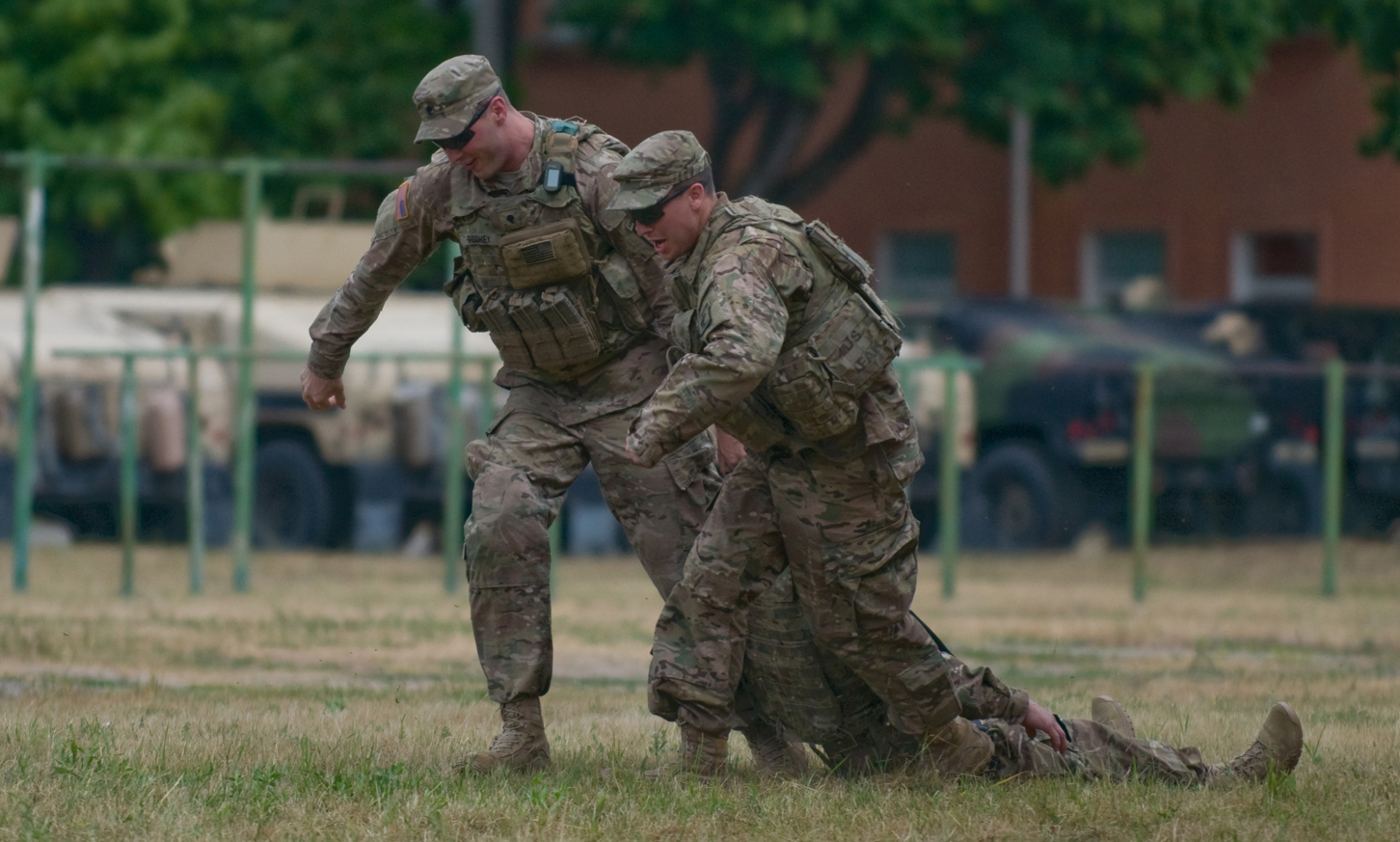|
Expert Field Medical Badge
The Expert Field Medical Badge (EFMB) is a United States Army special skills badge first created on June 18, 1965. This badge is the non-combat equivalent of the Combat Medical Badge (CMB) and is awarded to U.S. military personnel and North Atlantic Treaty Organization (NATO) military personnel who successfully complete a set of qualification tests, including both written and performance portions. The EFMB is known for its adherence to its testing standards and, as such, requires strict attention to detail from candidates in order to receive a "GO" on its combat testing lanes. The pass rate for FY 2017 was 7%, making the EFMB one of the most difficult and prestigious Army special skill badges to earn. Any Military Occupational Specialty (MOS) may attempt to earn the badge. However, the wear of the badge is only authorized when a service member is currently serving or has served in a medical-series MOS during the time that the service member earned it. The infantry equivalent of ... [...More Info...] [...Related Items...] OR: [Wikipedia] [Google] [Baidu] |
United States Army
The United States Army (USA) is the land warfare, land military branch, service branch of the United States Armed Forces. It is one of the eight Uniformed services of the United States, U.S. uniformed services, and is designated as the Army of the United States in the United States Constitution, U.S. Constitution.Article II, section 2, clause 1 of the United States Constitution (1789). See alsTitle 10, Subtitle B, Chapter 301, Section 3001 The oldest and most senior branch of the U.S. military in order of precedence, the modern U.S. Army has its roots in the Continental Army, which was formed 14 June 1775 to fight the American Revolutionary War (1775–1783)—before the United States was established as a country. After the Revolutionary War, the Congress of the Confederation created the United States Army on 3 June 1784 to replace the disbanded Continental Army.Library of CongressJournals of the Continental Congress, Volume 27/ref> The United States Army considers itself to be ... [...More Info...] [...Related Items...] OR: [Wikipedia] [Google] [Baidu] |
Tactical Combat Casualty Care
Tactical Combat Casualty Care (TCCC or TC3) are the United States military guidelines for Major trauma, trauma life support in Battlefield medicine, prehospital combat medicine, designed to reduce preventable deaths while maintaining operation success. The TCCC guidelines are routinely updated and published by the Committee on Tactical Combat Casualty Care (CoTCCC), which is part of the Defense Committees on Trauma (DCoT) division of the Defense Health Agency (DHA). TCCC was designed in the 1990s for the United States Special Operations Command, Special Operations Command medical community. Originally a joint United States Naval Special Warfare Command, Naval Special Warfare Command and Special Operations Medical Research & Development initiative, CoTCCC developed combat-appropriate and evidence-based trauma care based on injury patterns of previous conflicts. The original TCCC corpus was published in a Military Medicine (journal), Military Medicine supplement in 1996. TCCC has ... [...More Info...] [...Related Items...] OR: [Wikipedia] [Google] [Baidu] |
Fireman Carry Army
A firefighter is a first responder and rescuer extensively trained in firefighting, primarily to extinguish hazardous fires that threaten life, property, and the environment as well as to rescue people and in some cases or jurisdictions also animals from dangerous situations. Male firefighters are sometimes referred to as firemen (and, less commonly, a female firefighter as firewoman). The fire service, also known in some countries as the fire brigade or fire department, is one of the three main emergency services. From urban areas to aboard ships, firefighters have become ubiquitous around the world. The skills required for safe operations are regularly practised during training evaluations throughout a firefighter's career. Initial firefighting skills are normally taught through local, regional or state-approved fire academies or training courses. Depending on the requirements of a department, additional skills and certifications such as technical rescue and pre-hospital ... [...More Info...] [...Related Items...] OR: [Wikipedia] [Google] [Baidu] |

